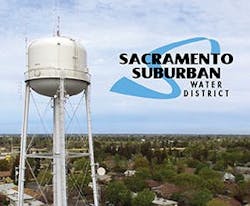Change isn’t something that’s embraced overnight. Some people are energized by change, others are more resistant. In my years as the Customer Services Manager for Sacramento Suburban Water District, a publicly owned water utility serving nearly 195,000 customers in California, I’ve come to find that in the water utilities space, there’s typically more hesitation—if not outright skepticism—than enthusiasm around the idea of innovation.
It makes sense
As a legacy industry, we’ve been handling processes in a particular way for quite literally decades. The notion of uprooting those tried-and-true practices for something unknown is unsettling for many of us. But however comfortable these old habits are, they can’t stop the rest of the world from moving forward. Eventually, change-resistant organizations fall behind the expectations of today’s customers and everyone feels the consequences.
At Sacramento Suburban, we reached the point where our legacy payment system was essentially held together by fishing wire and chewing gum, as the adage goes. It became clear that the bill-receiving and payment-making experience we were offering our customers simply was not living up to their expectations informed by simple, seamless payment solutions in other industries. Frankly, we were making it difficult for people to pay us. Our staff was bombarded with payment-related calls, field teams were overrun with the horrible work of shutting off services to delinquent constituents, and customers were growing increasingly frustrated by the lack of digital payment options.
Eventually, we had to face the question of whether conducting “business as usual” was doing more harm than good.
A new system
When I finally encountered a digital billing and payment solution that could address our need for modern, easy-to-use options and allow customers to pay bills whenever and however they prefer, I knew it was time to push for a change. I also knew it could be an uphill battle.
Before I could advocate for the new system, I needed to work closely with the prospective vendor to explain the value of the optimized solution to the department’s Controller and Director of Finance. The vendor’s team was a huge help for getting buy-in, crunching numbers on the organization’s future state, explaining the cost and time-saving benefits, and addressing any concerns from leadership to secure approval.
My partners were particularly compelled by the compliance elements of the solution. By implementing this PCI Level 1 compliant payments system, our team wouldn’t have to directly handle customer data anymore. This was a big deal, especially for our Director, as this protected our organization from legal implications in the unfortunate event of a data breach. The concept of a secure, third-party solution handling sensitive customer information in our stead put everyone’s mind at ease.
After hearing about the improvements for customer data management and increased internal efficiencies, we decided to implement the enhanced payments solution in May 2023 and we’ve seen growing digital adoption numbers ever since.
Confidence is key
Right away, I felt confident in the process of implementing our new solution. I was paired with an incredible Transition Success Manager whom I talked with at least once a day. After three months of working with him, we were comfortably up and running. If and when we do encounter a bug, I’m very comfortable using the solution’s “Support Central” and their customer service team is always relentless in helping us resolve any issue at any time.
The results
We’ve been live with the new billing and payment system for nearly a year now, and our backend processes are more efficient than ever. In fact, we’re down to one day a month for manual billing tasks.
When customers call with questions, it’s so easy to teach them to self-serve on the new system that they usually don’t call back. We have seen steadily decreasing call volumes as a result. Paperless billing adoption has spiked, allowing us to decrease our mailing expenses by about $1,000 a month. Plus, with the time saved, we were able to shift resources to meaningful improvements and projects that we’ve never had time for in the past.
The road ahead
Looking forward, we’re working on an outbound campaign to notify customers of leaks in real time. When we used to send out postcards, the response rate was about 1%. We did a small outbound test via text message, and the response rate was easily 40-50%. We’re thrilled to tackle this next project with the time and resources we’ve saved.
The road to these results wasn’t straightforward. It took months of work to demonstrate the potential of optimizing our payment system to leadership, and there were times when I wasn’t confident that we could break through to the more change-resistant folks. In the end, emphasizing the solution’s ability to save resources (including the most invaluable resource: time) and protect the organization from a compliance standpoint drove home the importance of this change—and I’m looking forward to delving deeper into this topic at CS Week on Wednesday, May 1 at 10:45 AM, in hopes of helping other utilities advocate for new tech and achieve similar results.
Conclusion
Today, our digital transformation of the billing and payment touchpoint has impacted every department for the better and made it easier than ever to achieve our guiding mission: to deliver a high-quality, reliable supply of water and superior customer service to the community of Sacramento.





